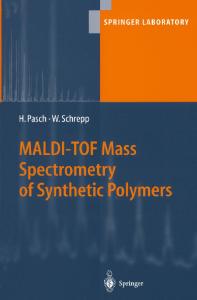Structural and Morphological Features of Synthetic and Natural Polymers
- PDF / 3,961,251 Bytes
- 10 Pages / 420.48 x 639 pts Page_size
- 61 Downloads / 386 Views
STRUCTURAL AND MORPHOLOGICAL FEATURES OF SYNTHETIC AND NATURAL POLYMERS BERNARD LOTZ Institut
Charles
Sadron
(CRM-EAHP)CNRS-Universit6
Louis Pasteur, 6 rue
Boussingault, 67083 Strasbourg Cddex, France ABSTRACT The crystal structures and crystalline morphologies of natural and synthetic polymers are briefly reviewed. Analogies and differences between these two systems are presented. Several examples of cross-fertilization of research in the two fields are presented, with emphasis, among natural polymers, on fibrous polypeptides and proteins. INTRODUCTION differences in terms of chemical In spite of significant configurations, Mw, polydispersity and of conformation and structure, natural and synthetic polymers have many features in common, often linked to their long chain character. As a consequence, concepts and methods of investigation developed in either field are often transposable to the other ; this holds in particular true for the characterization of structure and of structural hierarchy in these systems. The present contribution analyzes the structural hierarchy of natural and synthetic crystalline polymers and illustrates differences and analogies in the two of cross-fertilization in their classes of materials. Examples investigation are taken from previous investigations of the author, and are therefore centered, among natural polymers, on fibrous proteins and related polypeptides. THE STRUCTURAL HIERARCHY OF CRYSTALLINE POLYMERS It has become customary to describe the crystalline structure of polymers at four levels of organization : is in essence the molecular structure and - the primary structure configuration and defines the chemistry and chirality of the chain and residues i.e. - the secondary structure describes the molecular conformation, 0.5 to the helical structure and chain packing in the unit-cell (scale - I or 2 nm) - the tertiary structure deals with the lamellar organization of the chains. This lamellar structure is the fundamental characteristic of crystalline polymers ; it divides the "polymer space" at a - 10 nm scale and imparts a number of the polymer's physical properties
or super structure describes the three- the quaternary structure, dimensional arrangements of lamellae in larger structures : spherulites, etc ...
These various levels of organization are now examined in succession and, when possible, are compared for natural and synthetic polymers.
Mat. Res. Soc. Symp. Proc. Vol. 255. (1992 Materials Research Society
96
THE PRIMARY STRUCTURE Biological synthesis provides an unmatched control of chemical composition, structure, stereochemistry, uniform chain length, etc ... Furthermore, biological polymers can associate regularity of sequence and diversity within that regularity. As an illustration the repeat sequence of collagen : (Gly-X-Y)n ensures the presence of a Gly residue at every third position (which is a prerequisite for its three dimensional organization) while allowing a choice of X and Y residues, which include in particular proline and hydroxyproline. In a rela
Data Loading...










